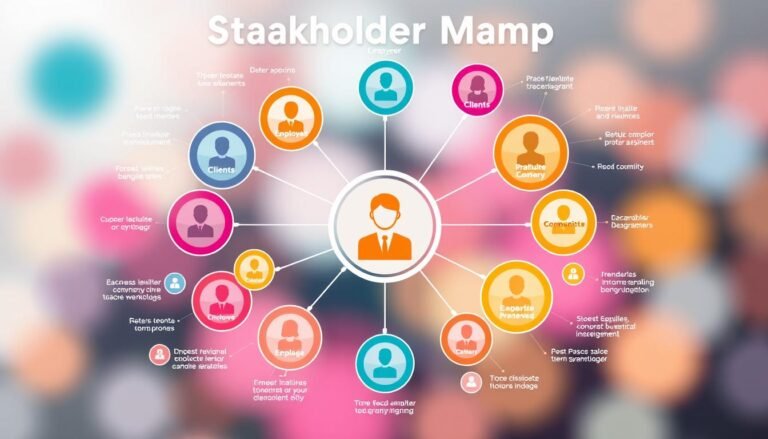Five Whys Analysis: Root Cause Problem-Solving
Ever felt like your problem-solving efforts only fix things temporarily? The Five Whys Analysis is a powerful problem-solving technique that can change how you tackle issues. It comes from the Toyota Production System and digs deep by asking “Why?” over and over. This method helps teams find the real cause of problems, not just the symptoms.
Learning this technique helps teams improve their root cause analysis skills. It makes working together more efficient and builds a culture of ongoing improvement. The Five Whys encourages critical thinking, leading to deep insights that can bring about big changes. Let’s dive into the Five Whys Analysis and see how it can help you solve problems better.
Key Takeaways
- The Five Whys technique involves asking “Why?” typically three to five times.
- It may require more or fewer iterations to reach the root cause depending on the context.
- Including team members with firsthand process knowledge enhances the effectiveness of the analysis.
- The process emphasizes understanding workflows rather than assigning blame.
- Consider visual tools like the fishbone diagram to complement your analysis.
Understanding the Five Whys Analysis
The Five Whys Analysis is a key part of finding the real cause of problems. It’s used in many methods, like the Toyota Production System. Taiichi Ohno created it in the 1950s. It helps teams go beyond the obvious and find the real reasons behind issues.
Definition and Origins
This method started at Toyota Motor Corporation and is still important in lean manufacturing. It’s a way to solve problems by asking “Why?” up to five times. This helps teams dig deep into the problem, not just its surface.
The name “Five Whys” might make you think it stops after five questions. But, it can go more depending on the problem’s complexity. Teams use tools like the fishbone (Ishikawa) diagram to help with this analysis. These tools help look at all possible root causes.
How the Method Works
Teams begin with a clear problem and ask “Why?” for each answer they get. This keeps them digging into the problem deeply. It helps everyone understand the issue better.
It’s important for the team to agree on the answers. If not, they might come up with different root causes. The Five Whys method is useful but has some limits. It might stop short at surface-level problems or depend too much on one person’s knowledge.
The Benefits of Utilizing Five Whys Analysis
The Five Whys Analysis is a key tool for improving problem-solving in organizations. It helps uncover deep issues and supports team work. Its simple approach makes it easy for teams in various industries to solve problems.
Identify Underlying Causes
Using the Five Whys Analysis helps teams find the real causes of problems. By asking “why” several times, they can tell the difference between symptoms and deep causes. This method avoids quick fixes and targets the main reasons behind issues.
It leads to a better understanding of complex problems. This makes solving problems more thorough and effective.
Enhance Team Collaboration
The Five Whys Analysis encourages team work by starting open discussions. It brings together different skills and ideas from various teams. This teamwork makes the analysis richer and builds a sense of shared responsibility.
It also improves how teams work together, leading to better and lasting solutions.
Simplify Problem-Solving
The Five Whys Analysis makes solving problems easier. It doesn’t need complex stats or special software. This makes it fast and accessible for teams to use.
It helps teams act quickly and find solutions together. This approach makes solving challenges faster and more successful.
https://www.youtube.com/watch?v=-a-Q9BC2w9I
How to Perform Five Whys Analysis Effectively
Doing a Five Whys analysis needs a clear method for solving problems. This method helps teams find the real causes of issues. Using a step-by-step process makes the analysis more efficient and helps teams work together better.
Step-by-Step Process
To thoroughly look at the problem, follow these steps:
- Define a focused problem statement to guide the discussion.
- Ask “Why?” in response to the identified problem, gaining the initial answer.
- Continue asking “Why?” for each subsequent answer until the root cause is uncovered.
- Validate responses using factual data rather than assumptions.
This problem-solving technique works well for simple problems in manufacturing and organizations.
Engaging the Right Team Members
Choosing the right people for the Five Whys analysis is key. Look for a cross-functional team with the right skills and knowledge. Including those affected by the problem helps everyone understand it better. Different viewpoints lead to better solutions and improve the analysis.
In conclusion, getting a team with diverse insights leads to new solutions. It also helps build a culture of ongoing improvement.
Five Whys Analysis: Best Practices and Tools
Effective problem-solving needs a strong method and the right tools. Visual tools make the Five Whys Analysis clearer, helping to understand problems better. This section will look at how tools like the fishbone diagram help in analysis. It will also cover best practices for documenting the process to get better results.
Visual Tools to Support Analysis
Visual tools are key in the Five Whys Analysis. The fishbone diagram is a great tool that makes it easy to see how different causes are connected. It helps teams see where to look deeper, making the analysis better.
- Facilitates understanding of complex issues
- Encourages team collaboration and communication
- Structures information for deeper insight into root causes
- Enables efficient identification of relationships among causes
Documenting the Process
It’s important to document the Five Whys Analysis. This way, all findings and root causes are kept track of. Good documentation helps with future reviews and sharing insights in the company. It supports ongoing improvement and helps plan future problem-solving with past lessons.
| Documentation Benefits | Description |
|---|---|
| Record Keeping | Helps maintain a history of root causes and corrective actions |
| Knowledge Sharing | Facilitates communication of findings across teams and departments |
| Performance Tracking | Enables monitoring of implemented changes and their effects |
| Insight Generation | Aids in identifying trends and recurrent issues over time |
Conclusion
The Five Whys Analysis is key for solving root causes of problems. It comes from the Toyota Production System’s principles. This method helps teams find deep issues in their work, pushing for ongoing improvement.
It’s simple yet powerful, helping teams find quick fixes and understand their work better. By working together, teams ask the right questions to uncover deeper issues. Training in this method makes teams better at solving complex problems.
Adding tools and best practices makes teams more adaptable and resilient. This helps them handle changes in the business world.
The goal of the Five Whys Analysis is to find not just the immediate causes but also the deeper reasons behind problems. This deep understanding helps teams make better strategies to avoid risks and keep quality high. It sets the stage for long-term success and efficiency in their work.
Source Links
- Five Whys for RCA Tool
- What are the Five Whys? A Tool For Root Cause Analysis
- Five whys
- What are the Five Whys (5 Whys) | Productboard
- What are the benefits and challenges of using the 5 Whys technique for root cause analysis?
- Five Whys | Root Cause Analysis Method
- How to conduct a 5 whys analysis
- 5 Whys Root Cause Analysis | How to Conduct It? (With Example)
- 5 Why & 5 How | Root Cause Analysis | Quality-One
- Unlock the Power of 5 Whys: Root Cause Analysis Made Easy
- The Five Why Analysis – A simple yet effective RCA tool – MaxGrip
- 5 Whys Analysis Pitfalls: Limitations and How to Avoid Them | EasyRCA
- The Power of 5 Whys in Root Cause Analysis
- 5 Whys template: Root cause analysis | Wrike







